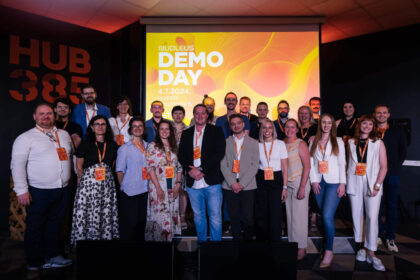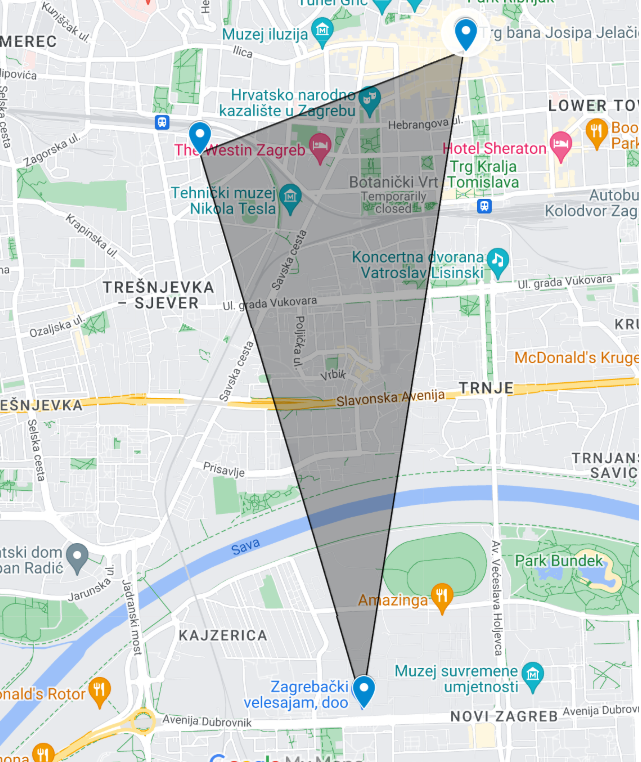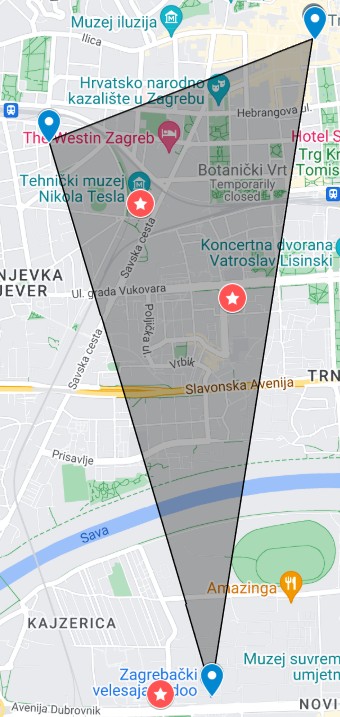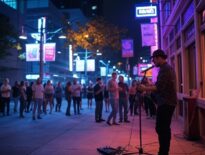
As I walked the streets of Zagreb, Croatia, not long ago, I couldn’t help but remark that I had a feeling that I was experiencing, Austin, TX, years ago. From my time in Michigan, Phoenix, Silicon Valley, and now Austin, my community knows well that the work I do is designing startup ecosystems; working with cities, governments, and investors, to put in place the economic development roadmap that serves both entrepreneurs and venture capitalists in the region. Long known for its resilient history and strategic location, stands at a crossroads of opportunity, much the same as was the case for the thriving startup ecosystems of the United States. With Zagreb emerging as a potential epicenter for innovation and Istria County serving as a cultural and economic magnet, the country can craft a future that blends entrepreneurship, tourism, and global investment into a thriving ecosystem.
Realizing this requires careful alignment of resources, leadership, and collaboration, so let’s follow up on my initial take, and here, in an exploration of Croatia’s potential, dive deeper into what I’d identify as Zagreb’s innovation triangle, Istria’s parallel appeal, and the industries that should form Croatia’s economic foundation. We’ll address the challenges ahead and outline actionable steps to transform this vision into reality.
Article Highlights
Zagreb: From Historical Capital to Innovation Epicenter
Zagreb has been the beating heart of Croatia since its days as a medieval trade hub. Over centuries, the city grew into a political, economic, and cultural capital, becoming the center of Croatian identity and influence. Today, its well-preserved architecture, dynamic cultural scene, and strategic location position it as a natural hub for innovation.
I’m a big fan of the idea of Innovation Triangles given the Research Triangle of Raleigh-Durham in North Carolina, the fact that Silicon Valley is a triangle of San Francisco, San Jose, and Oakland, and the Texas Triangle, so I put myself above the city of Zagreb and sought what makes sense to define and develop. What we need of such a thing is reasonable proximity, cultural appeal, social life, acadmics, urban density, and the resources necessary for entrepreneurs (by the way, for entrepreneurs NOT innovation – fueling R&D and technology is not the same as developing a startup ecosystem which spits out companies and jobs).
Here’s what I see.
What you’re looking at for those unfamiliar with the city, or seeking to understand how to do this with your region of the world, are 3 points of distinction on behalf of entrepreneurs:
- HUB385
- Ban Jelacic Square
- Zagreb Fair Convention Center
Each point in this triangle brings unique assets that, when combined, can redefine Zagreb’s role in the global entrepreneurial landscape. A most frequently asked question I get is, “not the University??” No, and I’ll explain why…
NUQLEUS and HUB385: The Catalyst for Startups
HUB385, Zagreb’s premier work and incubator space, stands at the forefront of Croatia’s startup movement. Launched with the vision of fostering collaboration among entrepreneurs, investors, and creatives. I experienced this with the venture builder NUQLEUS when I was there. This collaboration and focus symbolizes the city’s commitment to innovation through entrepreneurship and should be considered as critical.
As Ivan Vidakovic, a prominent Croatian entrepreneur and startup advocate, once stated, “Innovation ecosystems don’t just appear; they are built with intentional spaces where ideas collide, and communities thrive.” NUQLEUS embodies this ethos, offering mentorship, networking opportunities, and a launchpad for startups in industries like renewable energy, applied technology, and advanced manufacturing; at HUB385 establishes that the community is collaborative, inclusive, and accessible.
The Urban Core: A Magnet for Talent
Zagreb’s vibrant city center, Ban Jela?i? Square, with its bustling cafes, pedestrian-friendly streets, and historic landmarks, offers an environment where work and lifestyle seamlessly integrate. Young professionals and international talent are drawn to cities that provide not only career opportunities but also cultural and social vibrancy.
By situating startups and investors in proximity to Zagreb’s cultural heart, the city amplifies its appeal to a global workforce. Critically, this is essentially walkable from our first point, and an economic development plan would have the map laid out to steer Venture Capitalists, coworking spaces, tech offices, and related organizations, both locating themselves along this path, as well as steering the entirety of Zagreb to host meetups and events throughout.
The Zagreb Fair Convention Center: Gateway to the World
The Zagreb Fair Convention Center, a legacy of Croatia’s post-World War II industrial resurgence, is one of Southeast Europe’s largest and most versatile venues. While historically hosting trade fairs and industrial showcases, the center is ripe for transformation into a hub for global innovation conferences, cultural expos, and cross-industry collaboration.
Leaders such as Mate Rimac, founder of Rimac Automobili, have underscored the importance of visibility in the global marketplace. As Rimac noted in an interview with Forbes, “You can have the best technology in the world, but if no one sees it, it doesn’t matter.” The Convention Center provides a platform to showcase Croatia’s talent, drawing international investors and media attention.
More importantly, while this seems like a distance from our first two points, that’s typical. The convention centers in San Francisco are a drive from the heart of Silicon Valley and investors on Sand Hill Road, and if you’re familiar with SXSW or other innovation-oriented conferences in Austin, you know the convention center there is a long way from the heart of Austin’s tech and startup community in the northwest where most of it is found. What matters is that the city, journalists, and stakeholders of this community, come to see the triangle as the epicenter, and that what makes such triangles work (and why many cities struggle to pull this off) is that found WITHIN the triangle are the other resources of value, such as a university or tech companies. A convention center point enables us to draw both professional events and cultural events that draw attention from throughout the world, but those events only serve the city if we’re driving people away from the convention center location into the ecosystem where we want them – hence defining the other points.
Istria: The Appeal Beyond the City
Istria County, about an hour to the west, with its Roman ruins, Venetian architecture, and Adriatic coastline, has been a crossroads of cultures and commerce for centuries. Cities like Pula, with its well-preserved amphitheater, have historically attracted global attention, and today the region is known for its thriving tourism industry, world-class wine production, and artisanal crafts.
Economic and Cultural Synergy
Istria’s proximity to Zagreb mirrors the dynamic between Silicon Valley and Napa Valley or Austin and San Antonio. Investors and entrepreneurs often retreat to Napa for inspiration, and Istria offers the same opportunity for Croatia’s innovators. With its growing economy and unmatched aesthetics, the region is an ideal setting for investor summits, startup retreats, and cultural festivals. Think of what we’re drawing here is another point on our triangle so that effectively, what we have is an economic development zone.
Throughout, an intentional government policy would steer innovative companies, international organizations, and other meaningful cultural or tourist appeal, because what you’re striving for is a draw back and forth between the two major points. While Silicon Valley is a poor example of this with Napa, that’s because their triangle is rather compressed along the peninsula, with Silicon Valley having developed along the breadth. Austin and San Antonio are a better example of the implication of doing this well, as the corridor is now the fastest growing metropolitan region of the United States, an experience I explain here in what I call the Quantum Corridor.
Building Croatia’s Sand Hill Road
By positioning Istria as a hub for venture capital, Croatia can create a coastal counterpart to Zagreb’s innovation triangle. Just as Sand Hill Road in Palo Alto became synonymous with venture funding, Istria may serve as a haven for investors who appreciate the region’s blend of natural beauty and economic promise. To do this, it’s critical for planners to appreciate that expecting capital to fuel startups is putting the cart before the horse; we’re identifying the potential of Istria but MUST develop the reasons venture capital would coalesce and converge if it is to manifest for Croatia and the region. Learn more about how that works here.
The Importance of Proximity in Startup Ecosystems
Startup ecosystems thrive on density, connectivity, and accessibility. The physical proximity of key resources—such as coworking spaces, convention centers, and vibrant urban areas—creates the serendipitous interactions that fuel innovation and collaboration. This proposed Innovation Triangle, comprising NUQLEUS, the Zagreb Fair Convention Center, and the urban core, embodies this principle, offering a walkable network of spaces designed to foster creativity, entrepreneurial growth, and investment.
The idea of geographic proximity driving innovation isn’t new. Cities like Berlin and Tel Aviv demonstrate how clustering coworking spaces, event venues, and cultural hubs can transform urban areas into magnets for entrepreneurs and investors. In Berlin’s Mitte district, for instance, coworking spaces like Factory Berlin sit just steps from major conference venues and cultural landmarks, creating a seamless flow of activity between networking events, business operations, and lifestyle opportunities. Similarly, Tel Aviv’s Rothschild Boulevard is a tightly connected area where startups, venture funds, and cultural venues coexist, contributing to the city’s global reputation as a tech powerhouse.
For entrepreneurs, proximity within an ecosystem reduces friction in collaboration, increases exposure to new ideas, and creates a sense of community. Investors, meanwhile, benefit from being embedded in areas where they can easily meet founders, attend pitch events, and observe innovation in real-time. Zagreb’s Innovation Triangle offers these same advantages, concentrating resources in a walkable district that is both functional and inspiring.
The Unique Role of Convention Centers in Startup Ecosystems
Convention centers are often underutilized assets in startup ecosystems. Yet, they serve as critical bridges between local innovation communities and the global stage. The Zagreb Fair Convention Center, strategically placed within the proposed triangle, could host flagship events that attract international investors, media, and corporate partners.
Consider Austin again, where the Austin Convention Center plays a pivotal role in the success of SXSW. While most of Austin’s startup activity happens in suburban areas like The Domain or along Capital of Texas Highway, SXSW brings the world to the city center, creating opportunities for local startups to pitch to global investors while fostering cultural and economic exchange. Similarly, the Moscone Center in San Francisco has been instrumental in hosting events like Dreamforce, which bring tens of thousands of professionals into the city for networking and business development.
By anchoring one point of the triangle, the Zagreb Fair Convention Center would replicate this dynamic, serving as a launchpad for Croatian startups to gain visibility and forge international connections.
Why Venture Capital Develops Beyond City Centers
One of the critical reasons to strengthen ties between Zagreb’s Innovation Triangle and Istria lies in the natural progression of venture capital ecosystems. Venture capital rarely develops within dense urban cores. In the United States, Sand Hill Road in Palo Alto became synonymous with venture capital not because of its proximity to San Francisco but because of its location near the startups of Silicon Valley, far removed from the city center. Similarly, in Texas, venture capitalists often cluster outside of downtown Austin, in areas like Westlake Hills or suburban hubs like The Domain, where they can enjoy quieter, more private settings for deep work and deal-making.
The same dynamic is emerging in Europe, where VCs often prefer locations that balance accessibility to startups with environments conducive to reflection, networking, and relationship building. Istria offers this balance perfectly. Within a two-hour drive of Zagreb, it provides the ideal coastal retreat for venture capitalists to host meetings, evaluate startups, and unwind. By positioning Istria as Croatia’s version of Sand Hill Road, the country could attract international investors who seek both high-quality deal flow and an inspiring setting.
Strengthening the Tie to Istria
The tie between Zagreb and Istria isn’t just a geographic convenience — it’s a strategic necessity. While Zagreb can serve as the hub of entrepreneurial activity, Istria offers the complementary advantages of exclusivity, inspiration, and lifestyle appeal that investors and entrepreneurs value. This dynamic mirrors successful ecosystems worldwide:
- San Francisco and Napa Valley: While San Francisco is the operational hub for many startups, Napa Valley provides a nearby escape where investors and executives can forge relationships in a more relaxed setting.
- London and the Cotswolds: Many London-based investors retreat to the countryside for privacy and high-profile meetings.
- Tel Aviv and the Negev Desert: Israel’s startups benefit from Tel Aviv’s urban resources but also leverage the Negev as a space for retreats and innovation camps.
For Croatia, strengthening this tie could mean curating curated experiences that connect Zagreb’s Innovation Triangle with Istria’s luxury resorts, wineries, and cultural landmarks. Events like investor summits, startup retreats, or even dual-location conferences would enhance the ecosystem’s appeal, creating a sense of exclusivity and prestige.
By integrating the walkable resources of Zagreb’s Innovation Triangle with the lifestyle and investment appeal of Istria, Croatia has an opportunity to create a holistic ecosystem that mirrors the success of the world’s leading innovation hubs. This approach not only aligns with global best practices but also plays to Croatia’s unique geographic and cultural strengths. For entrepreneurs, it offers unparalleled access to resources and talent. For investors, it provides the rare combination of vibrant urban activity and serene coastal retreats—a balance that fosters both creativity and productivity.
Specific Industry Focus is Paramount to Startups Growth
While I was there, I incessantly pressed others for insight to the distinct sectors of Croatia’s economy because while governments like the idea of startup ecosystems and tech, the fact is that entrepreneurship only thrives when it’s clear what works exceptionally well there, evident in the fact that people are honest about what doesn’t. Trying to be a “tech ecosystem” or “startup city” is a mistake because it’s too generic; begging the question – if not that then what? Drawing from its existing strengths, Croatia should focus on these sectors to attract investment and grow its entrepreneurial ecosystem:
- Renewable Energy: Leveraging Croatia’s natural resources and engineering expertise to advance solar and wind energy technologies.
- Applied Technology or what’s being called Atom Technology: Encouraging innovation in sectors like automotive, biotech, and advanced manufacturing.
- Tourism Technology: Developing platforms and services that enhance Croatia’s tourism experience, from digital booking systems to sustainable tourism initiatives.
- Cultural Industries: Supporting startups in film, music, and the arts to build on Croatia’s growing reputation as a creative hub.
These industries align with global trends while playing to Croatia’s unique strengths, making them appealing to international investors and innovators.
Croatia’s Challenges to Overcome
- Fragmented Ecosystem: Croatia’s innovation ecosystem lacks the cohesion seen in established hubs like Berlin or Stockholm. Unified efforts are needed to bridge gaps between universities, startups, and investors. This is easily addressed; here’s how.
- Limited Venture Capital: While funds like Fil Rouge Capital have made strides, Croatia needs more active and diverse sources of early-stage and growth funding. Keep in mind what I already covered though, you can’t seek capital (which most place try to do), you have to develop the ecosystem that serves it.
- Global Visibility: Croatia’s startups must build a stronger international presence to attract attention and capital from global markets. Easily accomplished with a few major conferences, a festival, and intentional PR and storytelling.
Next Steps: A Project Plan for Croatia’s Vision
- Government Alignment: Develop policies that encourage foreign investment, provide tax incentives for startups, and streamline regulations for entrepreneurs.
- University Collaboration: Create joint programs between universities and NUQLEUS to foster research commercialization and entrepreneurship.
- Community Building: Host regular networking events, workshops, and hackathons within the Innovation Triangle to build a cohesive startup community.
- Investor Engagement: Position Istria as a retreat for global investors, offering curated experiences that combine business and leisure.
- Media and Influencer Strategy: Leverage global media outlets and Croatian influencers to amplify the narrative of Croatia as an innovation hub.
- Flagship Event: Launch a Croatia-wide festival inspired by SXSW, combining innovation, culture, and tourism. This event could use the Innovation Triangle as its epicenter while integrating Istria as a key location for retreats, parties, and workshops.
Take look at our map again because I’ve added a few things. Specifically, let me clarify why I said a point of economic development is not a university.
To the left of our bottom point, The University of Zagreb – indeed, very pivotal to the ecosystem! Make no mistake, I’m not saying it isn’t critical that that it in place, and my other-region examples have Stanford and the University of Texas within. Important to appreciate though, entrepreneurs don’t hang out on campus, venture capitalists generally (wisely) don’t fund startups launched by 20 year olds, and the community isn’t socializing at events at the Student Union. A critical hub of research and education, it needs to be within the ecosystem, not a focal point. And speaking of within, we have Public Open University Zagreb and Nikola Tesla Technical Museum – additional points of interest inspiring innovation and entrepreneurship through the culture and experiences Zagreb has to offer.
The collaboration of those 6 considerations, Government Alignment, University Collaboration, Community Building, Investor Engagement, Media and Influencer Strategy, and a Flagship Event, would start by coordinating each of these points into an orchestrated effort on behalf of entrepreneurship in Croatia.
Zagreb and Istria present Croatia with an unparalleled opportunity to blend entrepreneurship, culture, and global investment into a thriving ecosystem. By focusing this Innovation Triangle and leveraging the unique appeal of Istria, Croatia can position itself as a European leader in innovation and creativity. However, achieving this vision requires overcoming challenges and executing a cohesive strategy that unites government, universities, community builders, and the private sector.
My proposed roadmap offers a clear path forward and, in my experience, with intentional investment in infrastructure, events, and storytelling, Croatia can not only attract global attention but also secure its place as a beacon of resilience and opportunity in the 21st century.
What do you think?
What am I missing? Can you apply this economic development plan to your city? How do we start working together to help your entrepreneurs thrive and your investors support the future?






i love Zagreb!!
I really like the idea of an Innovation Triangle, as well as (re)building the role of Zagreb Fair, although that task may be a bit out of reach for us at Nuqleus
But we sure will be working on all the “next steps” points that you laid out and would love to discuss this more next time we meet!
Having spent some time in Zagreb this year, I couldn’t agree more. Croatia has tremendous potential. Paul, thanks for taking the time to write this article. I’m looking forward to being back in Croatia soon!
Christopher Piedmonte same; return trip that is. Was there in the late fall so lots of good-natured humor that we want to get back this summer.
Deni Nurki? much more in mind that isn’t in the article; I get my hand slapped a bit for writing too much LOL
Would be ideal to get the right people together to map this all out, why, when, and how.
Interesting take, Paul; thank you! This kind of strategic planning and collaboration on the local and national level is certainly missing. If things were organized as you described in your article, it would be a huge game-changer and help Croatia significantly position itself on the world map. I think bundling Zagreb and Istria (or even another very close and developed region called Me?imurje, famous for great food, vineyards, tradition, and wellness) would be a big selling point.
I never thought about having something like Austin’s SXSW in Zagreb, but it makes perfect sense how having it can be beneficial for the local startup ecosystem. We will make our first big step towards that this July at the Nuqleus demo day, making it the biggest startup festival so far and bringing many international guests and VCs.
I love the idea and Nuqleus’s mission is to build the startup ecosystem, so let’s see what we can do!
Matija Srbic sounds like I need to visit Me?imurje
The secret in something like SXSW is that it isn’t inherently a startup festival; most investors, advisors, and companies don’t go to startup events. The key is that is like a World’s Faire – it’s a showcase of culture, entertainment, and innovation. It draws global attention as such, and attendance from the people you need involved in the ecosystem, so that THEN you can show of the startups and innovation there.
Silicon Valley doesn’t have a SXSW because it’s identity as such already existed – music scene, counter-culture (hippies), etc. Nashville too, sort of already has the appeal, as might Paris (but they both need to work on their startup/innovation identity).
We have an example in Europe with which to explore working, I’m curious how this worked for Manchester
https://seobrien.com/the-art-making-manchester-startups
Yea, we had to leave something for your next visit
I get it and it makes sense. They have hobbies and they are passionate about other things, so offer them that, get them to come and show them what else is around